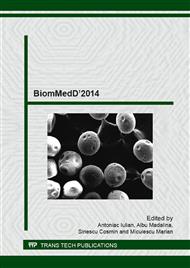p.210
p.216
p.222
p.228
p.233
p.238
p.243
p.249
p.255
Esthetic Build-Up Achievement of Dental Ceramics in Posterior Restorations
Abstract:
In the past the porcelain building technique was as follows: applying the opaque, building the dentin, layering the enamel and adding the translucent material [1]. But when one talks about dental restorations the only role model to think of is the corresponding natural tooth. The demands of today’s dentists and patients have spurred the authors to seek new ceramic systems [2]. A bioesthetic restoration is only possible when the dental technician bases its build-up technique on precise observations of the natural teeth in order to create the most exact copy possible [3]. The case study here was to try and achieve a high level of esthetic restoration in the posterior area using a complex build-up technique and compare the results with the natural teeth. We have granted sufficient time to analyze the layering of the dentition enamel and translucency and tried to correctly match the surface texture. The technician has focused his attention especially on the occlusal surface because of its morphologic complexity.The conclusion is that a high level of esthetic restoration can be obtained with a very good color match if instructions are followed and close attention to details is being paid. The abrasion and wear over time causes the transparent layer covering the dentin to diminish and easily trick an inexperienced eye. Surface characterization using whitish opaque enamel for the cusp ridges, edges and grooves and the use of individually stained opaque on the metal frame for the natural color impression effect coming from the inside are efficient solutions for achieving close to nature esthetics.
Info:
Periodical:
Pages:
233-237
Citation:
Online since:
March 2015
Authors:
Keywords:
Price:
Сopyright:
© 2015 Trans Tech Publications Ltd. All Rights Reserved
Share:
Citation:


